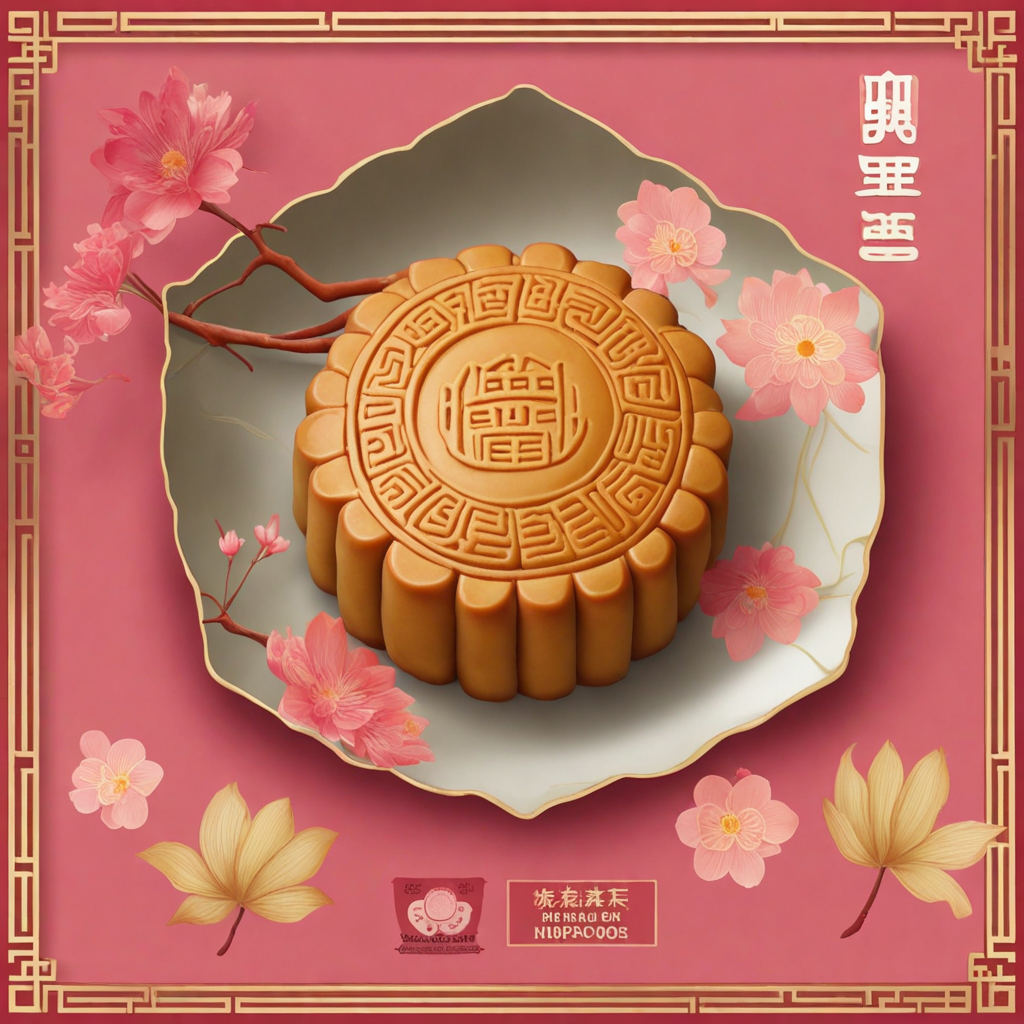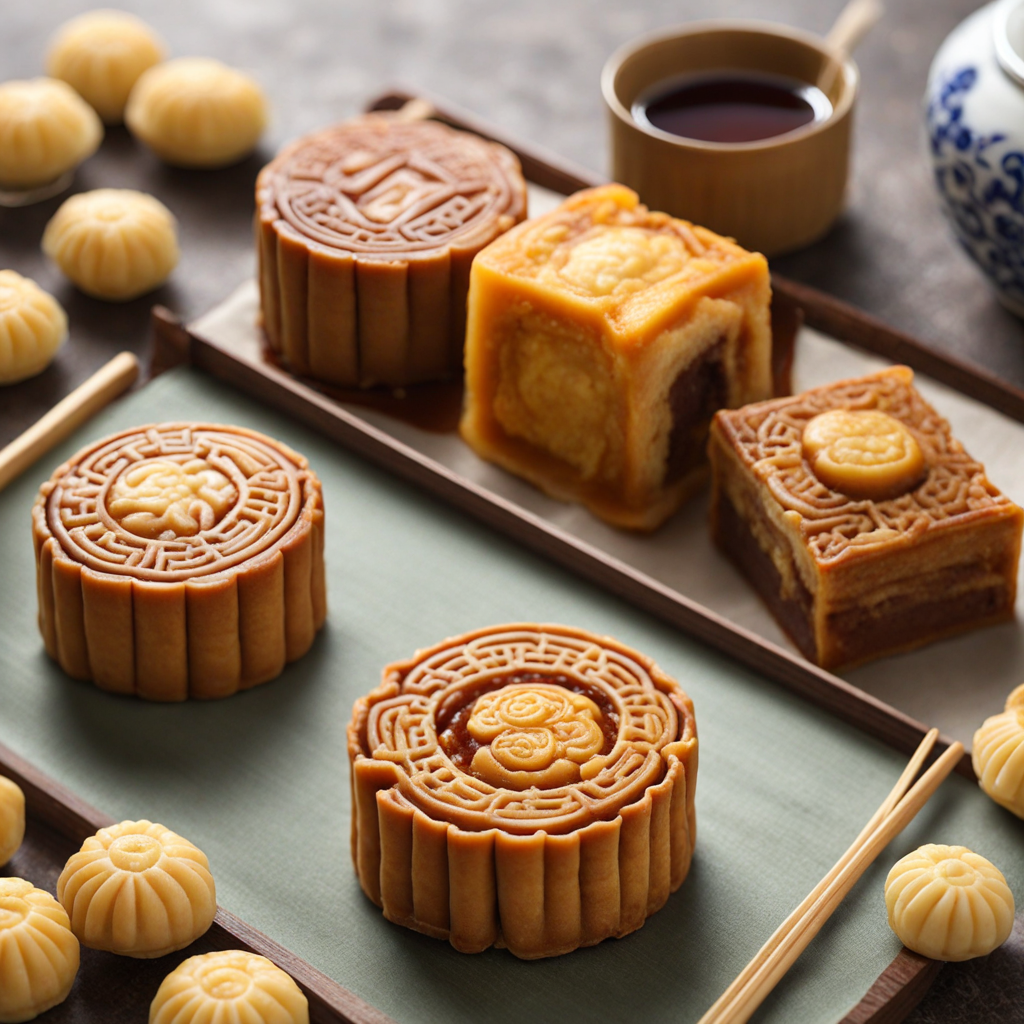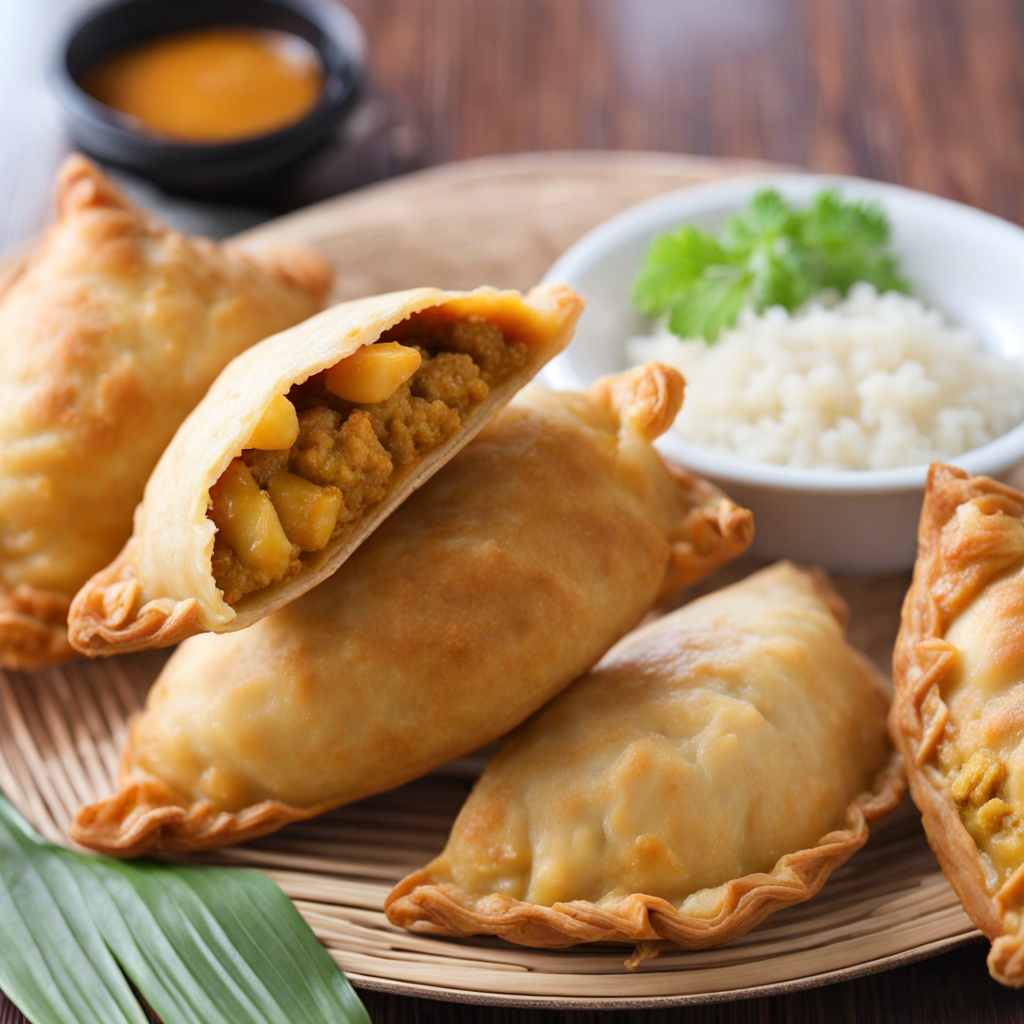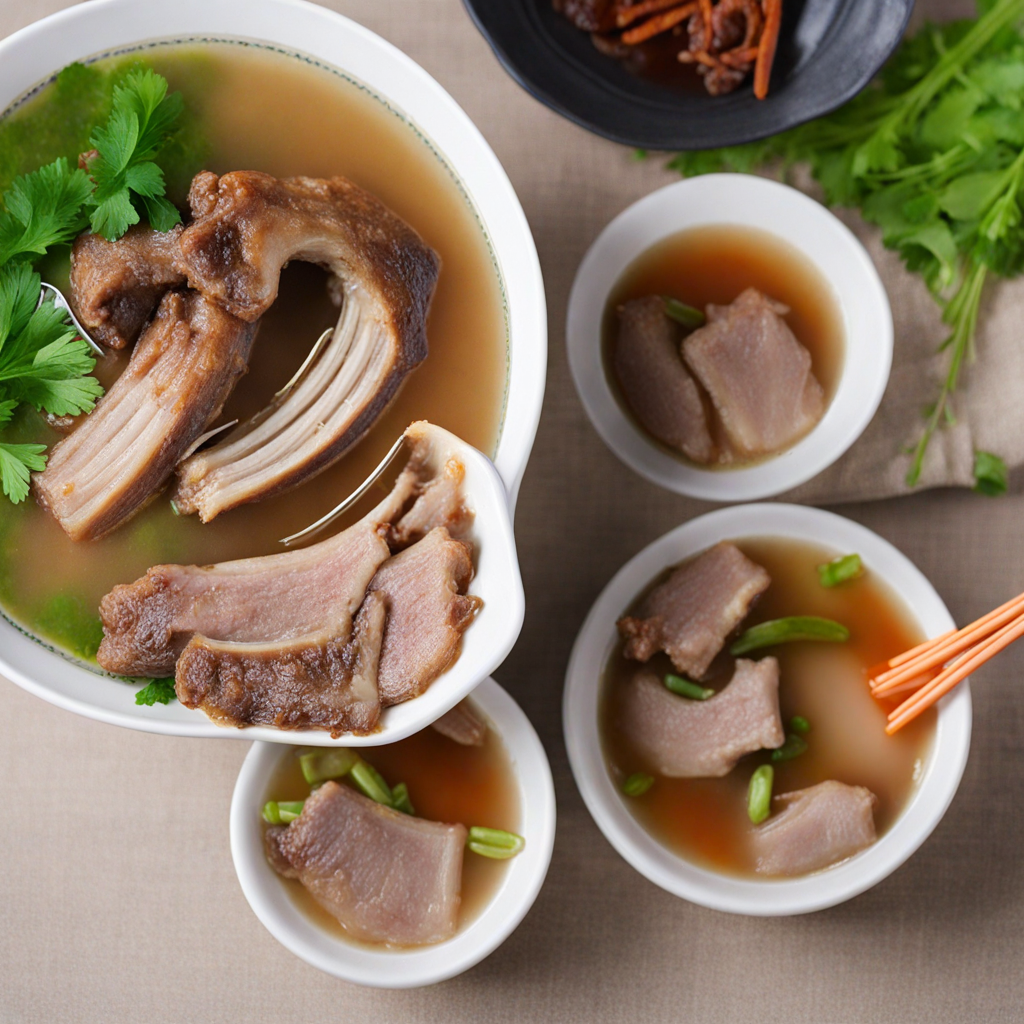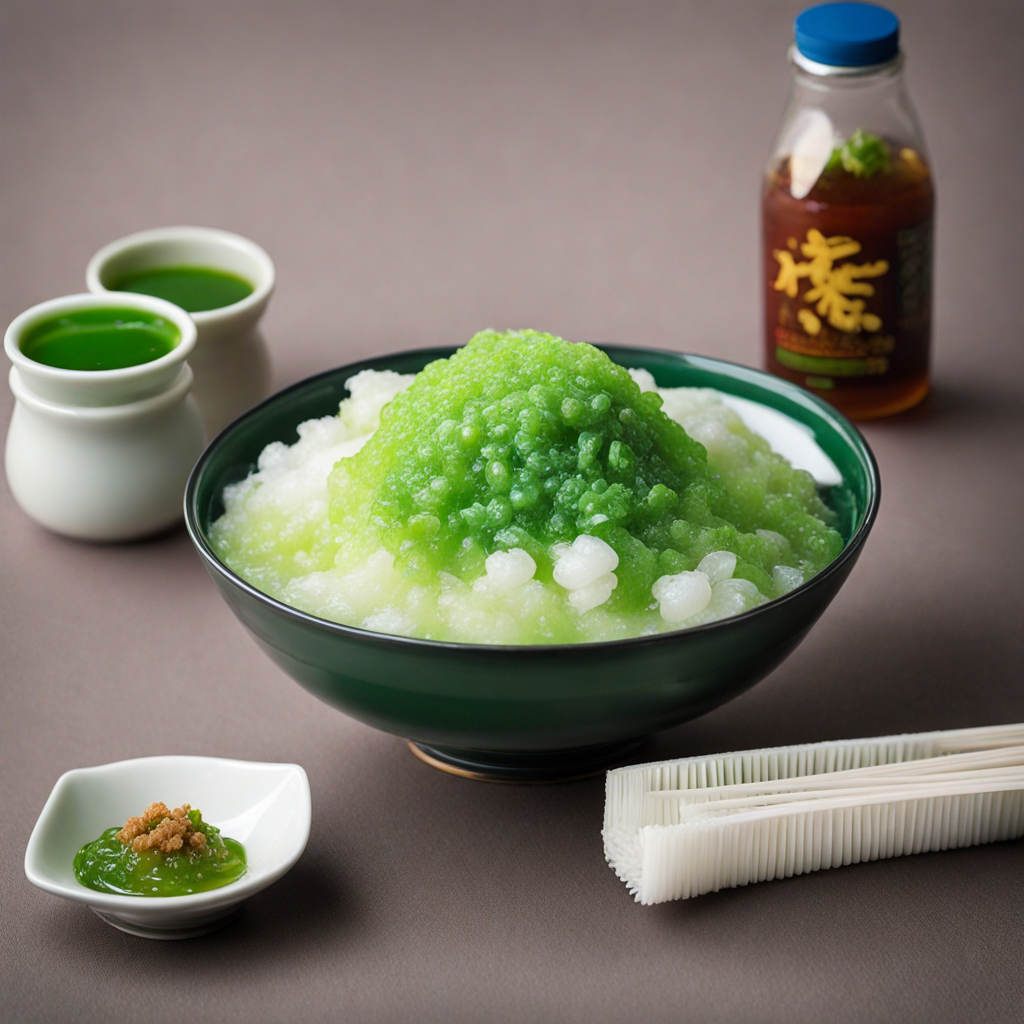Mooncake
Mooncakes are a traditional delicacy that holds a special place in Singaporean culture, especially during the Mid-Autumn Festival. These round pastries are known for their rich, dense texture and are typically filled with a variety of sweet or savory fillings. The outer crust can be either baked or snowskin, with the baked version having a slightly chewy, golden-brown exterior, while the snowskin variant is often white or pastel-colored and has a soft, mochi-like consistency. Each bite of mooncake delivers a unique experience, as the harmonious blend of textures and flavors unfolds on the palate. One of the most popular fillings is lotus seed paste, which is smooth and subtly sweet, often complemented by salted egg yolks that add a delightful savory contrast. Other traditional fillings include red bean paste and five kernel mix, which combines nuts and seeds for a crunchy texture. In recent years, innovative flavors have emerged, ranging from matcha and chocolate to durian and even ice cream, reflecting Singapore's diverse culinary landscape and creativity. These modern interpretations invite adventurous food lovers to explore new tastes while still honoring the heritage of this beloved treat. Mooncakes are often beautifully crafted, adorned with intricate designs and symbols that represent good fortune and happiness. They are typically enjoyed with hot tea, enhancing the experience as the warmth of the tea balances the richness of the mooncake. Sharing mooncakes with family and friends is a cherished tradition during the festival, symbolizing unity and togetherness. Discovering mooncakes in Singapore offers not just a taste of deliciousness, but also a glimpse into the rich cultural tapestry that surrounds this enchanting food.
How It Became This Dish
The History of Mooncakes (月饼) in Singapore Mooncakes, or 月饼 (yuèbǐng), are a quintessential delicacy associated with the Mid-Autumn Festival, known as 中秋节 (Zhōngqiū Jié), celebrated by Chinese communities worldwide. In Singapore, where diverse cultures converge, mooncakes have evolved into a symbol of cultural heritage and modern culinary innovation. #### Origins of Mooncakes The origins of mooncakes can be traced back over a millennium to the Tang Dynasty (618-907 AD), where they were traditionally offered to the moon as a tribute. They are believed to have been popularized during the Song Dynasty (960-1279 AD) when they became associated with the Mid-Autumn Festival, a celebration of the harvest and the full moon. At this time, mooncakes were enjoyed as a treat to honor the moon goddess Chang'e, a figure steeped in folklore. The traditional mooncake is round, symbolizing completeness and unity, and is typically filled with a rich paste made from lotus seeds, red bean, or nuts, often embedded with salted egg yolks, representing the full moon. The outer crust is made from a simple mixture of flour, golden syrup, and alkaline water, which gives mooncakes their characteristic texture and flavor. #### Cultural Significance In Singapore, where over 70% of the population is of Chinese descent, mooncakes hold significant cultural value. The Mid-Autumn Festival is a time for family reunions, much like Thanksgiving in the West. Families gather to celebrate togetherness, enjoy mooncakes, and admire the full moon, which symbolizes prosperity and family unity. In traditional beliefs, mooncakes are not just food; they carry deeper meanings. They are often given as gifts to express goodwill, gratitude, and respect among family members, friends, and business associates. The exchange of mooncakes during this festival fosters relationships and strengthens community ties. The act of sharing mooncakes symbolizes the sharing of blessings and joys. #### Evolution of Mooncakes in Singapore As Singapore evolved into a melting pot of cultures and a global city, the mooncake underwent significant transformations. The late 19th and early 20th centuries saw an influx of Chinese immigrants, bringing their customs and culinary traditions with them. Mooncake shops began to emerge in Singapore, catering to a growing demand for these traditional pastries. During this period, mooncakes remained largely traditional, with classic fillings and designs. However, post-World War II, as Singapore began to modernize and develop economically, the culinary landscape changed dramatically. The 1960s and 1970s marked a turning point for mooncakes, as food artisans began experimenting with flavors and ingredients to appeal to a broader audience. #### Innovation and Modern Trends By the late 20th century, the mooncake industry in Singapore underwent a renaissance. Bakeries and hotels began to innovate, introducing lavish flavors and contemporary presentations. The introduction of ice cream mooncakes, chocolate mooncakes, and even snowskin mooncakes (a type made with glutinous rice flour and served cold) showcased the fusion of tradition with modern culinary techniques. Today, the options are nearly limitless. Unique fillings such as durian, green tea, and even alcoholic flavors have become popular. The snowskin mooncake, which originated in Hong Kong, gained traction in Singapore in the 1980s and has since become a staple in mooncake offerings. Its delicate texture and chilled form provide a refreshing twist to the traditional baked mooncake, attracting younger generations who appreciate innovation. Furthermore, the presentation of mooncakes has evolved to reflect contemporary aesthetics. Many bakeries now offer artisanal designs, using elaborate packaging that often features intricate motifs and colors. This emphasis on visual appeal aligns with the modern consumer's desire for experiences that are Instagram-worthy, thus merging culinary enjoyment with social media culture. #### Mooncakes and Globalization In recent years, the globalization of food culture has influenced the mooncake market significantly. Singapore’s multicultural environment has resulted in the blending of culinary traditions, leading to unique adaptations. Notably, the influence of Malay and Indian cuisines can be seen in mooncake offerings that incorporate local flavors and ingredients, such as pandan and gula melaka. Moreover, the export of mooncakes has expanded, introducing this traditional Chinese delicacy to international markets. With the rise of the Chinese diaspora, mooncakes have found their way into the hearts and homes of communities in North America, Europe, and beyond. This global appeal has prompted international bakeries to create fusion mooncakes that cater to diverse palates. #### Social Responsibility and Sustainability Another notable trend in the mooncake industry is the growing emphasis on social responsibility and sustainability. Many local bakeries are now focusing on using natural ingredients, reducing sugar content, and implementing eco-friendly packaging. The rise of health-conscious consumers has led to the development of low-sugar and vegan mooncakes, ensuring that the tradition continues to thrive amidst changing dietary preferences. In addition, during the Mid-Autumn Festival, various organizations and groups engage in charitable activities, often distributing mooncakes to the less fortunate. This spirit of giving reflects the core values of the festival and reinforces the importance of community support. #### Conclusion The history of mooncakes in Singapore is a testament to the evolution of food as both a cultural artifact and a canvas for modern innovation. From their ancient origins and cultural significance to their transformation into contemporary culinary delights, mooncakes continue to play a vital role in the celebrations of the Mid-Autumn Festival. As Singaporean society continues to evolve, so too will the mooncake—adapting to new tastes and trends while remaining a cherished symbol of unity, tradition, and cultural pride. The enduring popularity of mooncakes is not merely a reflection of their taste, but also of their deep-rooted significance in fostering connections between people, generations, and cultures.
You may like
Discover local flavors from Singapore


